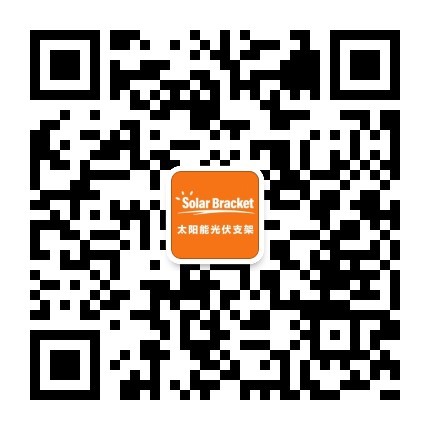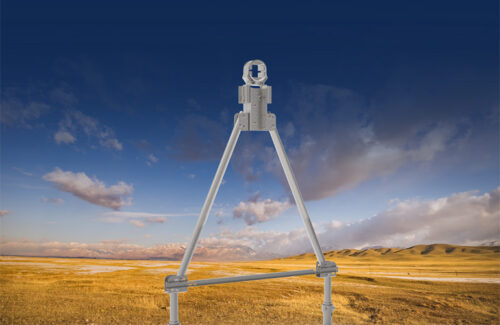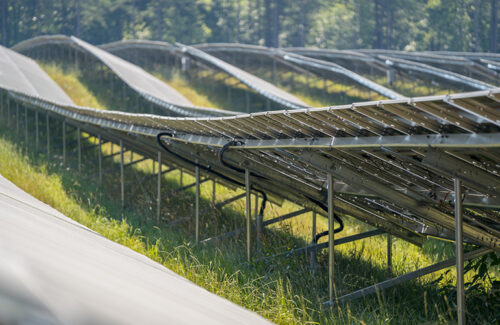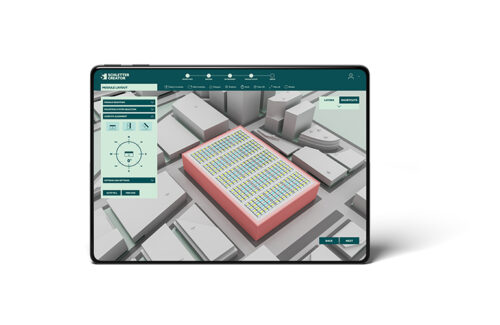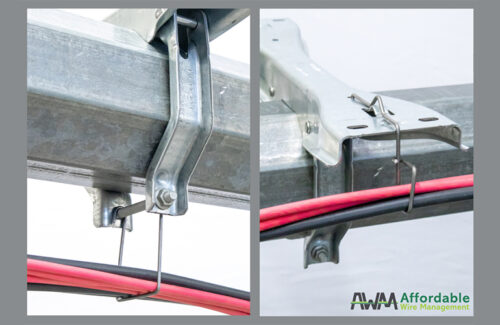原文:
Watch the webinar below. To download the webinar slides directly, please click here.
For those who submitted questions during the webinar, thank you. We’ve compiled your questions and answered them below.
Topics Covered:
- Testing Methodology
- Module Guidelines and Tracker Architecture
- Stowing Strategies and
- Designing for Wind
- Weather, Climate and Geography-Related
- Code-based Design
TESTING METHODOLOGY
Q: What is the difference between the methods CPP Wind Engineering Consultants uses for wind studies and the methods used by RWDI?
A: Both follow ASCE 49 labs to the best of their ability (and both labs contribute to writing this wind tunnel testing standard). But some studies require methods that go beyond conventional, well-documented techniques, particularly for solar. For example, most wind tunnel testing assumes scales in the range of 1:400. The wind tunnels, data acquisition methodology, etc. are traditionally tuned to these types of scales. What happens when you put in a solar structure modeled at 1:30? From CPP’s experience, the method of data processing and results needs to be re-tuned for testing at these smaller scales, and the next version of ASCE 49 will be being changed to reflect this.
This really highlights the importance of peer review. You can have CPP review RWDI’s work, or other reputable options like the University of Western Ontario, Canada and Florida, United States.
In this study, we started the instability investigation with the equations for classic bridge instability, then followed with section model tests (CFD and wind tunnel). Some of these methods predicted stability when in reality, there was galloping or vortex lock-in. Performing the multi-row aeroelastic study proved to be necessary to fully characterize the stability boundary.
Q: Are instantaneous peak coefficients being recorded during the static analysis or an average of the coefficients during the duration of the test?
A: The entire time series of loading is recorded. Peak pressures used in the design are statistically processed peaks. Structural engineering should always be done with peak loads – statistical peaks are the basis for all loads in ASCE 7 and other wind loading standards.
Q: At what stage are static wind tunnel tests, buffeting dynamics study, and instability – multirow testing performed? Are these done for individual projects by the EPC firm?
A: These three studies are done once for a product. The recommendations of these studies are applied to each site by the racking company to determine stow policy and wind loads. The EPC will use the resulting loads.
Q: What statistical studies are required for deciding the wind speed for conducting an aeroelastic wind tunnel analysis?
A: To decide if an aeroelastic test is needed, we recommend a screening, which accounts for the dimensions, stiffness, and damping of the tracker.
MODULE GUIDELINES AND TRACKER ARCHITECTURE
Q: What special considerations need to be considered when defining the tracker design parameters with First Solar modules?
A: NEXTracker analyzes both the weight, chord length, and mounting of these modules. The weight and chord length are accounted for in the structural calculations of both static and dynamic loads. Since this is a frameless module, we place clips at the end of the modules to ensure there will not be slippage or movement under heavy wind loads.
Q: What is your view on frameless modules with solar trackers?
A: First Solar has done a great job of handling the mounting of frameless modules. The main difference is the grip point, where clips are placed at the end of the module to ensure it will be secure even under heavy wind load. However, First Solar Series 6 is on a frame, following on this trend preference of framed modules.
Q: In the model wind tunnel test, how do you ensure the model represent the dynamic characteristics of the real trackers?
A: Aeroelastic testing for these systems required that a number of scaling parameters be matched, related to the stiffness, damping, and natural frequency. The proof that you’ve done it right, like most modeling, comes from validation against full-scale data.
Q: What is your view on 1P vs 2P tracker architectures related to related to critical wind speeds? Would it get worse for 2P because of large chord length?
A: Related to wind speeds, 2P will always have a larger load. The previous school of thought was to stow at zero degrees as this is the best way to combat high static loads. Practice, however, has proven this is an unsafe position due to dynamics. As chord length has a squared effect on torque, this can lead to a 400% load increase over a 1P tracker. As vortices shed on a module edge, this can lead to torsional galloping, and thus, massive damages if held at a horizontal position during high wind speeds.
Q: How pronounced is the dynamic effect in fixed tilt structures as opposed to trackers?
A: We have no evidence of instability in fixed-tilt systems, but the buffeting dynamics (modal excitation) are every bit as important for fixed tilts as for trackers. These can increase static wind loads by a factor of 2 or 3, depending on the damping, design wind speed, and the natural frequency.
STOWING STRATEGIES
Q: Which tilt angle gives the highest torque on the whole row?
A: From a dynamics perspective, stowing at higher tilts increases dynamic wake buffeting effects – which will increase the torque on the row. These can largely be mitigated with damping and appropriate structural analysis. However, stowing at lower tilt angles leads to instability – resulting in ever increasing torque until the row itself fails, which isn’t cost-effectively addressed by damping or stronger tubes.
Q: What stow angle do you recommend for high wind events like hurricane-speed winds/storms?
A: It’s best to stow at high angles with proper damping during intense storms or any wind event. Anything in stow near horizontal will likely lead to torsional galloping and huge damages.
Q: At the high tilt angle, what are the peak local pressures on PV cells? It appears that micro-cracking is very likely.
A: In a hurricane, you could see rapidly varying peak local pressures above 5000 pascals (100 psf). We are not able to comment on how this might impact micro-cracking or PV reliability. It’s not just static loads that we must look at; PV can be subjected to accelerations and stress due to movement of the structure.
Q: Aren’t the aeroelastic instabilities occurring also at constant wind speed? You don’t need a turbulent wind flow to stud specifically start aeroelastic instabilities.
A: That’s right, you don’t need turbulence to see the instabilities, but it can have an effect on the exact value of the critical wind speed.
DESIGNING FOR WIND
Q: During the design phase, how should EPCs choose the best, most cost-effective tracker? Does NEXTracker perform site-specific analyses while still in the proposal phase?
A: NEXTracker performs site-specific analysis for every project proposal close. For cost efficiency, we strive to always have full rows, as well as the least number of exterior rows (E/W edge rows) as possible. On top this, there should be an assessment of the true levelized cost of energy (LCOE) cost, which is at the end of a system’s lifetime and not just upfront installed costs. Downtime and damages can occur when the proper analysis is not carried out such as wind tunnel and reliability testing.
Q: What about micro-cracking as a result of short module rails?
A: There are several causes of micro-cracking. However, from the perspective of the racking/module rails, the main cause is the movement of the solar panel over time. The best way to reduce this is to the reduce the dynamics of a module. As evidence shows, stowing at high angles reduces dynamics as dampers can stabilize the tracker in this position.
Q: In the field, how do you properly monitor the wind? What is the typical or optimal distribution of wind speed sensors?
A: Wind sensors should be placed at all corners of the site, typically 500-1000m apart.
Q: Given the cost of these wind analyses, then what should smaller players do? Are there any proven stock vendors/codes that one can choose from?
A: Regrettably, we can’t change the physics or the complexity which do present a barrier to entry. This is not unique to solar racking. There may be vendors and consultants who offer a less expensive analysis, but this may not stand up to peer review and is unlikely to be accurate without validation.
Q: If bigger is worse (e.g. 4-meter vs 2-meter chord), then why are CSP troughs so big (about 6-meter parabolic mirrors)?
A: It is overly simplified to say bigger is “worse”. Each tracker design needs to consider the right loads and perform its own cost-benefit analysis. In your example, a large design driver is likely the length of tubing required to transport the heat transfer fluid. Using a larger mirrored surface reduces that overall length.
Q: How are the U-bolts that connect the torque tube to the module rails affected by the wind and how do you evaluate them?
A: The U-bolt or any part for that matter must be designed for both the static and dynamic load that it collects. In particular, the dynamic effects are often overlooked in solar designs. Even if your tracker is stable, it might still be oscillating at the end of the row. It’s important to question whether the acceleration of this oscillation been taken into account in the design of the component.
Q: How do advanced software control systems help secure tracking systems during wind events?
A: Advanced software does play a key role in mitigating risk during wind events. At its most basic level, an anemometer reads a certain wind speed, and when the stow wind speed threshold is crossed the site automatically goes to the selected stow angle.
Q: How does the turbulence level impact the vortex shedding off the panels?
A: Turbulence tends to widen the band of mean wind speeds at which there is significant vortex shedding. It is important to distinguish turbulence in the approaching wind from turbulence in the array interior, which is due to vortex shedding. The latter has a lot more energy at 2-4 Hz.
Q: Is there a method to estimate the wind speed at which the natural frequency of the structure matched the excitation frequency due to the wind?
A: You can estimate this by using a Strouhal number of fD/U = 0.12, where D is the vertical projected height, U is the mean wind speed at tracker height, and f is the natural frequency. But in turbulent flow, the vortex shedding covers a wide peak (from 0.05 to 0.2, sometimes wider), so this estimate is of limited use. The “buffeting dynamics study”, one of the pillars of full wind load analysis, is what’s needed here.
Q: What is the reaction time of your tracker against high-speed wind event?
A: Zero to two minutes depending on the current tracking angle.
Q: What about the clamps? Can they get loose by a large wind force/gust?
A: It is important to design all components for the static and dynamic forces resulting from wind loading. If inadequate pre-load is applied to fasteners, it can result in loosening over time. The pre-load in the fastener should exceed the expected load.
Q: Does flutter occur for trackers like it once did for the Tacoma Narrows bridge?
A: The instability does resemble that of the Tacoma Narrows bridge, as that bridge’s motion was also primarily torsional. But there are enough big differences between the two structures that modeling the aeroelastic fluid-structure interaction is fundamentally different. For example, the weight of the bridge was important, but it is not critical for the comparatively light PV panels.
WEATHER, CLIMATE AND GEOGRAPHY-RELATED
Q: Does the NEXTracker control system respond to dynamic loads by moving the trackers into a safe stow angle and how does the control choose the appropriate stow angle if the dynamic loads are changing?
A: NEXTracker uses anemometers around a site which goes to stow when the wind speed threshold is measured. We account for the dynamic loads at the peak wind speeds and stow angle for that site.
Q: As solar plants move to more northern climates and snow loading becomes more of a factor, would NEXTracker comment on snow loading considerations?
A: Current building codes are designed to account for several days of snow accumulating on a static structure. There is not a uniform standard around snow loads for moving structures, but the most direct engineering approach would be to perform a Monte Carlo simulation that considers the nature of the tracker in shedding snow. To date, NEXTracker has not had a snow-related failure, despite having several hundred megawatts of trackers in heavy snow regions. We do believe, however, that more research is warranted in this arena.
Q: How much impact do you see on dynamic properties due to foundation/soil variability?
A: Fixed tilt systems tend to be sensitive to soil stiffness, as most modes of vibration for fixed tilt systems focus around the flexibility of the piers. For tracking systems, the mode shapes tend to be more focused around the actual tracker structure itself. It is also worth noting that different soils not only affect the frequency of vibration but the damping as well.
Q: If you have a site in a hurricane zone, what angle would you stow at for a NEXTracker system to best protect the overall system – module, racking, foundation?
A: It is best to stow at high angles during any wind event, especially hurricanes. NEXTracker monitors all its sites 24/7 and we pre-emptively stow if a hurricane enters in the proximity of that particular site.
CODE-BASED DESIGN
Q: How much of the overall O&M cost can be reduced by an appropriate protocol considering wind testing and dynamic analyses?
A: It depends on the tracker model and many other variables which make it hard to asses. All too often PV plants are damaged due to improper stowing (0 degrees) and portions of a site can be wiped out. On top of that, downtime leads to huge revenue losses for project owners when the trackers are not operating.
Q: Why does NEXTracker routinely recommend Rick Category 1 for the solar projects when they know that this would increase the risks of dynamic instabilities and therefore structural failures?
A: NEXTracker follows the risk categories laid out in ASCE 7, where most projects qualify as a risk category 1. As presented in the webinar, it’s often not the peak wind speeds at a site, but the mean wind speeds that can cause the most damage due to the frequency of these events. While the risk is obviously greater overall at the lower wind speeds of category 1, compared to category 2, we have had zero wind events with our Gen2 tracker.


